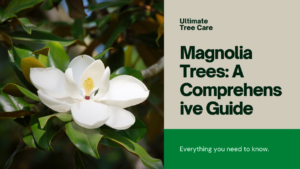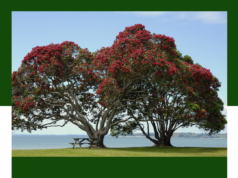
Are you looking for a way to enhance your garden with beautiful and fragrant trees? Look no further than magnolia trees. These stunning trees are not only visually appealing, but they also have a sweet, lemony scent that will fill your garden with a delightful fragrance.
In this comprehensive guide, we will cover everything you need to know about magnolia tree types, planting techniques, and caring for these remarkable trees. Whether you’re an experienced gardener or a beginner, this guide will provide you with the information you need to create a thriving garden filled with magnolia trees.
Key Takeaways
- Magnolia trees are an excellent addition to any garden, with their beautiful appearance and sweet fragrance.
- This guide will provide you with all the information you need to successfully plant and care for magnolia trees.
- Learn about different magnolia tree types, planting techniques, and essential care tips.
- Proper maintenance, including fertilization, pruning, and watering, is important to keep your magnolia trees healthy and vibrant.
- With the right location, sunlight exposure, and care, your magnolia trees will thrive and become the centerpiece of your outdoor space.
Types of Magnolia Trees to Plant
If you’re looking for the perfect magnolia tree to brighten up your garden, you’ll be spoiled for choice with the different types of magnolia trees available. Each one offers unique characteristics that can enhance the beauty of your landscape. Here are some of the best magnolia tree varieties:
| Magnolia Tree Type | Description | Best Environment |
|---|---|---|
| Southern Magnolia | Known for its large, glossy leaves and fragrant white flowers, the Southern Magnolia is a classic choice for any garden | USDA zones 7 to 9 |
| Star Magnolia | This shrub-like magnolia blooms early in the spring with showy white or pink flowers before its foliage appears | USDA zones 4 to 8 |
| Japanese Magnolia | This tree is famous for its stunning, cup-shaped flowers that come in shades of pink, purple, and white | USDA zones 5 to 8 |
| Yellow Magnolia | This rare magnolia tree has vibrant yellow flowers that add a pop of color to any garden | USDA zones 5 to 9 |
Ultimately, the best magnolia tree variety for your garden depends on your preferences and the climate in which you live. Consult with a local nursery or gardening expert to find the perfect magnolia tree variety for your garden.
Planting Magnolia Trees: Tips and Guidelines
Planting a magnolia tree can be a rewarding experience for any gardener. Whether you’re planting your first tree or adding to your existing collection, following the right techniques and guidelines will ensure the success of your magnolia tree.
Before you begin planting, consider the following:
- Choose a location that provides ample sunlight and well-drained soil.
- Ensure the soil pH level is between 5.0 and 6.5.
- Choose a tree that is appropriate for your climate.
- Plant during the dormant season, ideally in late fall or early winter.
Once you’re ready to plant, follow these easy steps:
- Start by digging a hole twice as wide as the root ball and just as deep.
- Loosen the soil at the bottom of the hole to encourage root growth.
- Place the magnolia tree in the hole, making sure the top of the root ball is level with the ground.
- Fill the hole with soil, gently tamping it down to remove any air pockets.
- Water the tree deeply and add a layer of mulch around the base to retain moisture.
- Regularly water the tree during the first growing season, ensuring the soil stays moist but not saturated.
Remember, proper planting is essential for the health of your magnolia tree. Follow these guidelines and be patient as your tree takes root and begins to grow.
Magnolia Tree Planting Guide
Here is a table that shows the ideal conditions for planting magnolia trees:
| Condition | Ideal | Acceptable |
|---|---|---|
| Soil pH | 5.0-6.5 | 4.5-7.5 |
| Soil Drainage | Well-drained | Moist |
| Sunlight | Full Sun | Partial Shade |
| Climate | Appropriate for your zone | Suitable for your zone |
Remember to always consult a professional if you have any doubts or concerns about planting your magnolia tree. With the right care and attention, your magnolia tree will thrive and add beauty to your garden for years to come.
Magnolia Tree Care: Essential Tips for Maintenance
Now that you’ve planted your magnolia tree, it’s important to understand how to care for it properly. Follow these essential tips for maintaining the health and beauty of your magnolia tree:
Pruning
Pruning is a crucial aspect of magnolia tree care. It helps to promote healthy growth, control the tree’s size, and remove any dead or diseased branches. Prune your magnolia tree in late winter or early spring while it’s still dormant. Use sharp, clean pruning shears or a saw to make clean cuts. Avoid pruning in summer or fall, as this can cause damage and lead to disease.
Magnolia Tree Care Tip: Remove any water sprouts that grow from the base or trunk of the tree, as these can weaken the tree and reduce its aesthetic appeal.
Fertilizing
Fertilizing is also an essential part of magnolia tree care. Use a slow-release fertilizer specifically formulated for magnolia trees. Apply the fertilizer in early spring before new growth appears. Be careful not to over-fertilize, as this can lead to root burn and damage to the tree. Follow the instructions on the fertilizer package carefully.
Magnolia Tree Care Tip: Consider adding organic matter, such as compost or well-rotted manure, to the soil around your magnolia tree. This will provide additional nutrients and improve soil structure.
Watering
Magnolia trees require regular watering to maintain their health and beauty. Water your magnolia deeply once a week during dry periods. Use a soaker hose or drip irrigation system to avoid getting the leaves wet, which can lead to disease. Apply a layer of mulch around the base of the tree to retain moisture and regulate soil temperature.
Magnolia Tree Care Tip: Be mindful not to overwater your magnolia tree, as this can lead to root rot and other problems. Use a moisture meter to determine when the soil is dry and needs watering.
Disease Prevention
Preventing disease is a crucial part of magnolia tree care. Keep an eye out for common diseases like leaf spot, powdery mildew, and scale insects. Treat any infections promptly with appropriate fungicides or insecticides. Proper pruning and fertilization can also help to prevent disease.
Magnolia Tree Care Tip: Clean up any fallen leaves or debris around the base of the tree, as this can harbor disease and pests.
With proper care and attention, your magnolia tree will thrive and provide you with years of beauty and enjoyment. Follow these essential tips for magnolia tree care and enjoy the stunning magnificence of this remarkable tree.
Magnolia Tree Pruning: Techniques and Timing
Pruning your magnolia trees is an essential part of their maintenance. It helps to shape the tree, promote healthy growth, and prevent diseases from spreading. Here are some tips to help you prune your magnolia trees:
- Timing is crucial when it comes to pruning magnolia trees. The best time to prune is during the late winter or early spring when the tree is still dormant. Avoid pruning during the fall season, as it can stimulate new growth that may not have enough time to harden off before winter.
- When pruning, make sure to use clean, sharp tools to avoid damaging the tree. Remove any dead, damaged, or diseased branches, cutting them back to healthy wood. Also, remove any crossing branches or those that are growing in the wrong direction.
- As a general rule, avoid removing more than one-third of the tree’s canopy during pruning. Removing too many branches can shock the tree and stunt its growth.
- After pruning, make sure to sterilize your tools with rubbing alcohol to prevent the spread of diseases.
- Take extra care when pruning younger magnolia trees, as they are more vulnerable to damage. Avoid over-pruning and focus on shaping the tree.
By following these magnolia tree pruning tips, you can ensure your tree is healthy, beautiful, and well-maintained. If you’re unsure about how to prune your magnolia tree correctly, consult with a professional gardener.
Magnolia Tree Diseases: Identification and Prevention
Magnolia trees are generally healthy, but they can be susceptible to certain diseases and pests that can damage or kill the tree if left untreated. Here are some common diseases that can affect magnolia trees and how to prevent and manage them:
Leaf Spot
Leaf spot is a fungal disease that causes black or brown spots on the leaves of magnolia trees. If left untreated, it can cause defoliation of the tree. To prevent leaf spot, make sure to keep the area around the tree clean and remove any fallen leaves. Fungicidal sprays can also be applied to the tree as a preventative measure.
Powdery Mildew
Powdery mildew is a fungal disease that can cause a white powdery growth on the leaves and branches of magnolia trees. To prevent powdery mildew, make sure the tree has good air circulation and is not crowded by other plants. Fungicidal sprays can also be used to treat mildew if it occurs.
Magnolia Scale
Magnolia scale is an insect pest that appears as a white, waxy material on the branches and leaves of magnolia trees. To prevent scale, maintain good tree health and regularly inspect the tree for any signs of infestation. If scale is detected, insecticidal sprays can be used to eliminate the pests.
Verticillium Wilt
Verticillium wilt is a fungal disease that can cause yellowing and wilting of the leaves on magnolia trees. Unfortunately, there is no cure for verticillium wilt, and infected trees must be removed to prevent the spread of the disease. To prevent verticillium wilt, make sure to plant healthy trees in well-draining soil.
By understanding the common diseases that can affect magnolia trees and how to prevent and manage them, you can ensure the health and longevity of your trees. Regular inspection and maintenance are crucial for caring for magnolia trees and keeping them free from pests and diseases.
Magnolia Tree Fertilizer: Best Practices for Nutrient Balance
If you want your magnolia trees to thrive, it’s crucial to provide them with the right amount and type of fertilizer. Fertilizers can promote growth, enhance the color of leaves and flowers, and improve the overall health of your magnolia trees.
The ideal time to fertilize your magnolia trees is in the early spring, right before the buds begin to open. This way, the trees can absorb the nutrients and minerals and use them for growth and development throughout the season.
When choosing a fertilizer for your magnolia trees, opt for a balanced blend that contains equal amounts of nitrogen, phosphorus, and potassium. A good example is a 10-10-10 fertilizer, which provides a well-rounded nutrient balance.
It’s essential to follow strict guidelines when applying fertilizer to your magnolia trees. Overfertilization can be harmful to your trees and result in burned roots or damage to the foliage.
Here are some tips for applying fertilizer to your magnolia trees:
- Measure the area around your tree’s drip line and calculate the correct amount of fertilizer to apply.
- Spread the fertilizer evenly around the tree, making sure to keep it at least 6 inches away from the trunk to avoid burning the bark.
- Water the tree immediately after applying fertilizer to help the nutrients seep into the soil and reach the roots.
Remember, proper fertilization is just one part of caring for your magnolia trees. Regular pruning, watering, and protection from pests and diseases are also crucial for their health and longevity. By following these best practices for fertilization and overall care, you can ensure that your magnolia trees remain beautiful and vibrant for years to come.
Magnolia Tree Watering: Tips for Proper Irrigation
Watering magnolia trees is crucial for their growth and health, but it can be a bit tricky. Follow these tips to ensure proper irrigation:
- Water your magnolia tree thoroughly once a week during the growing season.
- Adjust the frequency of watering based on weather conditions, ensuring the soil doesn’t dry out completely.
- Avoid over-watering, as magnolia trees are susceptible to root rot.
- Apply water to the root zone, not the leaves or flowers.
- Consider using a soaker hose or drip irrigation to ensure deep watering and prevent soil erosion.
It’s also essential to understand the watering requirements of different magnolia tree varieties. Some trees prefer moist soil, while others can tolerate dry conditions.
| Magnolia Tree Variety | Watering Needs |
|---|---|
| Southern Magnolia | Moist soil |
| Star Magnolia | Regular watering |
| Saucer Magnolia | Well-drained soil |
| Cucumber Tree Magnolia | Moist soil |
By following these magnolia tree watering tips, you can ensure proper irrigation and help your magnolia trees thrive.
Magnolia Tree Sunlight Requirements: Providing Adequate Exposure
Proper sunlight exposure is crucial for the healthy growth of magnolia trees. Magnolias require ample sunlight to produce their beautiful blooms, but they also need protection from excessive sun exposure, especially during the hot summer months.
When choosing the location for your magnolia tree, ensure it is planted where it can receive at least six hours of direct sunlight daily. However, if you live in a hot climate, it is best to plant your magnolia in an area where it can receive partial shade during the afternoon to protect it from the intense sun.
It is important that you monitor your magnolia tree’s sunlight exposure throughout the day. Observe how the sun moves across your garden and adjust the location of your tree accordingly to ensure it receives the right amount of sunlight. If you notice that your magnolia is getting too much sun, you can provide additional shade by planting it near other plants or adding a shade cloth.
Excessive exposure to sunlight can cause damage to your magnolia tree, such as scorching of leaves, stunted growth, and even death in extreme cases. Therefore, it is crucial to provide the appropriate level of sunlight exposure your magnolia tree requires for healthy growth.
Protecting Magnolia Trees from Sun Damage
If you notice signs of sun damage on your magnolia tree, such as wilting leaves or yellowing foliage, take prompt action. Here are a few tips to protect your magnolia tree from sun damage:
- Cover the tree during the hottest part of the day with a shade cloth or cloth cover.
- Water the tree deeply and frequently during periods of drought or excessive heat.
- Apply a layer of organic mulch around the base of the tree to help retain moisture and regulate soil temperature.
By providing the appropriate level of sunlight exposure and prompt attention to any signs of sun damage, you can ensure your magnolia tree thrives and remains a beautiful addition to your garden.
Magnolia Tree Landscaping Ideas: Enhancing Your Garden
Magnolia trees are not only beautiful and fragrant, but they can also add a touch of elegance and sophistication to any garden. Here are some magnolia tree landscaping ideas to help you create a stunning outdoor space:
- Plant smaller magnolia tree varieties in containers and place them strategically around your garden for a pop of color and texture.
- Use magnolia trees as a focal point in your garden. Plant them in the center of a circular stone pathway or surround them with low-growing plants to create a beautiful border.
- Integrate magnolia trees with other trees and plants in your garden for a dynamic and diverse landscape. Consider pairing them with evergreens or blooming shrubs like azaleas or rhododendrons.
- Use magnolia trees to create stunning hedges or screens. Plant them in a row and prune them regularly to maintain their shape and size.
- Combine magnolia trees with other architectural elements like fountains, sculptures, or seating areas to create a cohesive and visually appealing outdoor space.
With these magnolia tree landscaping ideas, you can transform your garden into a beautiful oasis. Remember to choose the right magnolia tree variety for your climate and location, and provide them with proper care to ensure their health and longevity.
FAQ
What are the different types of magnolia trees?
There are several types of magnolia trees, including Southern Magnolia, Saucer Magnolia, Star Magnolia, and Cucumber Tree, among others.
How do I plant a magnolia tree?
To properly plant a magnolia tree, choose a suitable location with well-draining soil, dig a hole twice as wide as the root ball, and place the tree in the hole. Backfill with soil, water thoroughly, and mulch the base.
How do I care for a magnolia tree?
Magnolia trees require regular watering, pruning, and fertilizing. It’s important to provide them with adequate sunlight and protect them from common diseases and pests.
When should I prune my magnolia tree?
It’s best to prune magnolia trees right after they finish blooming, typically in late spring or early summer. Avoid pruning in late summer or fall, as it may interfere with bud formation for the next year’s blooms.
What are some common diseases that affect magnolia trees?
Magnolia trees can be susceptible to diseases such as powdery mildew, leaf spot, and bacterial blight. Proper identification, prevention, and treatment are important for maintaining the tree’s health.
How often should I fertilize my magnolia tree?
It’s recommended to fertilize magnolia trees once a year in early spring or late fall. Use a balanced fertilizer specifically formulated for trees, following the manufacturer’s instructions.
How much water do magnolia trees need?
Magnolia trees generally require deep watering once a week during dry periods. The soil should be moist but not waterlogged. Adjust the frequency and amount based on weather conditions and the tree’s individual needs.
What are the sunlight requirements for magnolia trees?
Magnolia trees thrive in full sun to partial shade. They require at least six hours of direct sunlight each day to ensure optimal growth and flowering.
How can I incorporate magnolia trees into my garden landscape?
Magnolia trees can be used as focal points, privacy screens, or shade trees in your garden. They can also be incorporated into mixed borders or planted along driveways or walkways for a stunning visual impact.
Conclusion
Congratulations! You have reached the end of this ultimate guide on magnolia tree types, planting, and care. By now, you have learned about the different varieties of magnolia trees, how to plant them properly, and how to care for them to keep them healthy and thriving.
Remember that magnolia trees require attention and maintenance, but with the proper care, they will reward you with their stunning beauty and fragrance for many years to come.
Enjoy Your Magnolia Trees
With this guide, you have all the knowledge you need to create a vibrant and flourishing garden that showcases these remarkable trees. Whether you are a beginner or an experienced gardener, you can now confidently plant and care for magnolia trees.
Enhance your garden with creative landscape ideas that incorporate magnolia trees and transform your outdoor space. With their stunning beauty, magnolia trees will undoubtedly become the centerpiece of your garden.
Thank you for reading this guide, and we hope it has inspired you to take the first step in creating a beautiful garden with magnolia trees!
















